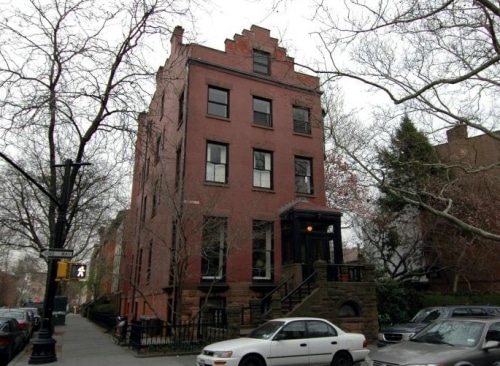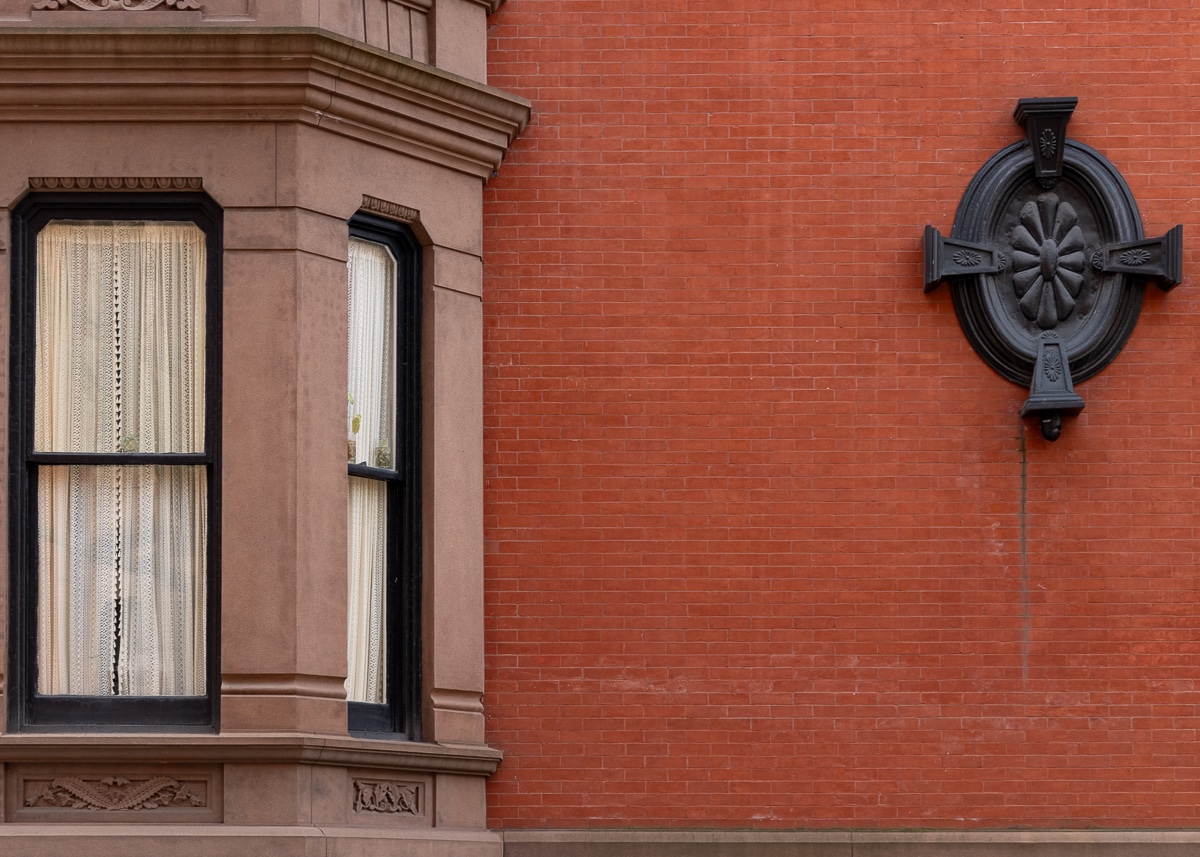Walkabout: Of Sailing Ships and the Affairs of Men, Part 1
Read Part 2 of this story. It’s the beginning of the summer season, when all of us yearn to leave home and office for outdoor activities. The same warming breezes that call us into the parks, and encourage us to partake in sports and play also called to the people in the Gilded Age at…

Read Part 2 of this story.
It’s the beginning of the summer season, when all of us yearn to leave home and office for outdoor activities. The same warming breezes that call us into the parks, and encourage us to partake in sports and play also called to the people in the Gilded Age at the end of the 19th century. For these people, the cost of playing came high, and for one extremely wealthy Brooklynite, the popular sports of summer awaited: making money, yachting, and cheating on your wife.
I first came upon John H. Hanan while looking at a photograph of his home, which once stood on the corner of Carroll Street and Eighth Avenue, now the site of an apartment building. Who was John Hanan, and what did he do to be able to afford a very large, C.P.H. Gilbert designed mansion? Mr. Hanan and his story turned out to be quite interesting.
John Henry Hanan was an immigrant success story. He was born to James and Annie Hanan in Ireland in 1849. His family came to American that same year, and he was schooled in the public schools of Brooklyn. He made his fortune in shoes, carrying on the trade of his shoemaker father, originally going into business as Hanan & Son, in 1865.
They would soon far surpass his father’s highest expectations, eventually becoming one of the largest shoe manufacturers in New York. The Hanan’s were among the first to stamp their name on every shoe, and by 1888, began opening retail stores. By 1894, they had stores in Brooklyn, NYC, Boston, New Haven, Philadelphia, Cleveland, Milwaukee, Buffalo, Chicago, and St. Paul. By 1914, they had shoe stores in thirteen American and European cities, including London and Paris.
In 1893, the Hanan’s bought a factory building at 220 Water Street, in what is now DUMBO, and tore it down to build a new five story factory. The shoes began as cut pieces on the top floor, and were ready to pack and ship by the time they made their way down to the first floor. By 1894, this factory was producing a third of the shoes produced in the 65 shoe factories in Brooklyn, and employed over 1,100 people. Shoe manufacturing was a major industry in Brooklyn at the end of the 19th century, netting a combined business of over $2.3 million. The Hanan’s were getting a third of it.
John Hanan also owned other shoe companies in other cities, and was president of the National Boot and Shoe Manufacturers Association, and the founder of the United Shoe Machinery Corporation, which manufactured machines for shoe factories. Like many successful industrialists, Hanan was also on the board of directors of several large banks, insurance, and investment companies, including the Atlantic National Bank, the Title Guarantee and Trust Company, and the Manufacturers Trust Company. By any way you wanted to count it, John H. Hanan was an extremely wealthy man.
John Hanan, his wife Henrietta, and their children lived at 118 Eighth Avenue beginning in 1892, in a large Romanesque Revival mansion designed by prominent architect C.P.H. Gilbert, who was in the midst of designing many other fashionable homes for Brooklyn’s wealthy in the blocks near this home.
Like many rich men of the day, John Hanan became obsessed with the sport of yachting. He was not alone, yacht clubs had sprung up wherever rich men of the Gilded Age lived, and there were clubs based in Manhattan and Brooklyn, as well as in the many vacation spots along Long Island, as well as in Newport, RI, and other posh seacoast towns.
In 1892, Hanan launched his most famous yacht, the Embla, a sleek steam powered yacht that would soon grace the pages of the Brooklyn Eagle and the New York Times for the next two years, as a powerful craft which won many awards and races, and was used often by Hanan for parties and business meetings.
He was a member of the New York, Atlantic, Larchmont and Riverside Yacht Clubs, racing the Embla under the flag of the Brooklyn-based Atlantic Yacht Club. He enjoyed his boat for almost two years, before trading it to developer John Bliss for the Arlington Apartments; the Montrose Morris designed apartment building on the edge of Montague Street, which had been built in 1888. He wasn’t without a vessel for long, buying several more yachts over the years, including a couple of racing yachts for his sons.
In 1898, the other favorite pastime, gossipy and messy affairs of the heart, landed at the Hanan doorstep in the form of a Mrs. Beulah M. Dutton. Mrs. Dutton and Mr. Hanan would say both say they met in Cincinnati, over ten years prior, where she lived at the time, recovering from a divorce. He was there on business. Four years later, by 1892, she was living in Park Slope, at 39 St. Marks Avenue.
She claimed that she was prominent in society, but the Brooklyn Eagle, ever vigilant, checked back in the social registers and could find no mention of her at the usual events or lists until she appeared in the Social Register’s Blue Book for 1896.
Mrs. Dutton didn’t go out much, but when she did, neighbors reported that she was dressed in fashionable gowns, and rode in an expensive rig. They also said she was blond and “not exceptionally handsome,” and had told everyone that she was a widow, although she never said how long her husband had been dead. She also said that Mr. Hanan had persuaded her to move to Brooklyn, and had helped her find a house, which she was said to have bought with her parents.
The scandal erupted early in 1898 because Mrs. Dutton suddenly left Brooklyn for Chicago, selling the house, taking half the furniture with her, and selling the rest to the house’s new owner. She then had her lawyer file suit against John Hanan, alleging breach of contract to the tune of $150,000, a princely sum at the time.
The suite stated that Hanan had promised Mrs. Dutton jewelry worth that amount, but he hadn’t delivered, because he had given the jewelry to another woman, Mrs. Edith Briggs Smith of Newport, Rhode Island. She had recently married Joseph H. Thompson, a Manhattan manufacturer, but before her marriage had also been wooed by the married John Hanan.
In March of 1898, John Hanan was believed to have sailed for Europe. He didn’t leave any explanation of why he was going, no one knew if it was business or pleasure, including Mrs. Henrietta Hanan, who hadn’t even known he had gone, until reporters came to her house. He came back later that year, and in October of 1898, the case of Dutton v Hanan came to an end in a Chicago courtroom. John H. Hanan paid Mrs. Dutton $105,000 in return for 2 boxes of “evidence”: papers and letters she had in her possession.
The appropriate papers were filed both in Kings County and in Cook County, and that case was closed. They weren’t the only papers with the Hanan name to cross a court clerk’s desk, however. In 1903, Mrs. Henrietta Hanan filed for divorce, only to be counter sued by her husband. What other rough seas had our intrepid yachtsman been sailing in? Remember Mrs. Edith Briggs Smith-Thompson, recipient of $150,000 worth of jewelry? So did Mrs. Hanan and her lawyers.
Next time: Danger on the high seas, jewel thieves robbing the rich in their summer homes, and that was just a night out for the Hanan’s. Read about the rest of the story on Thursday.









fortunately, this was all pre-twitter.
You think he could have posted pictures of himself naked on a handbill and pasted them up?
I totally think so. These Victorians were wild and crazy guys deep down.
Fascinating! I found so much of it hilarious, especially in view of recent news events. Can’t wait for the next installment.
Terrific stuff! linking the RE to the people and their stories is endlessly fascinating and in an odd way – enlightening to our own time. Thanks